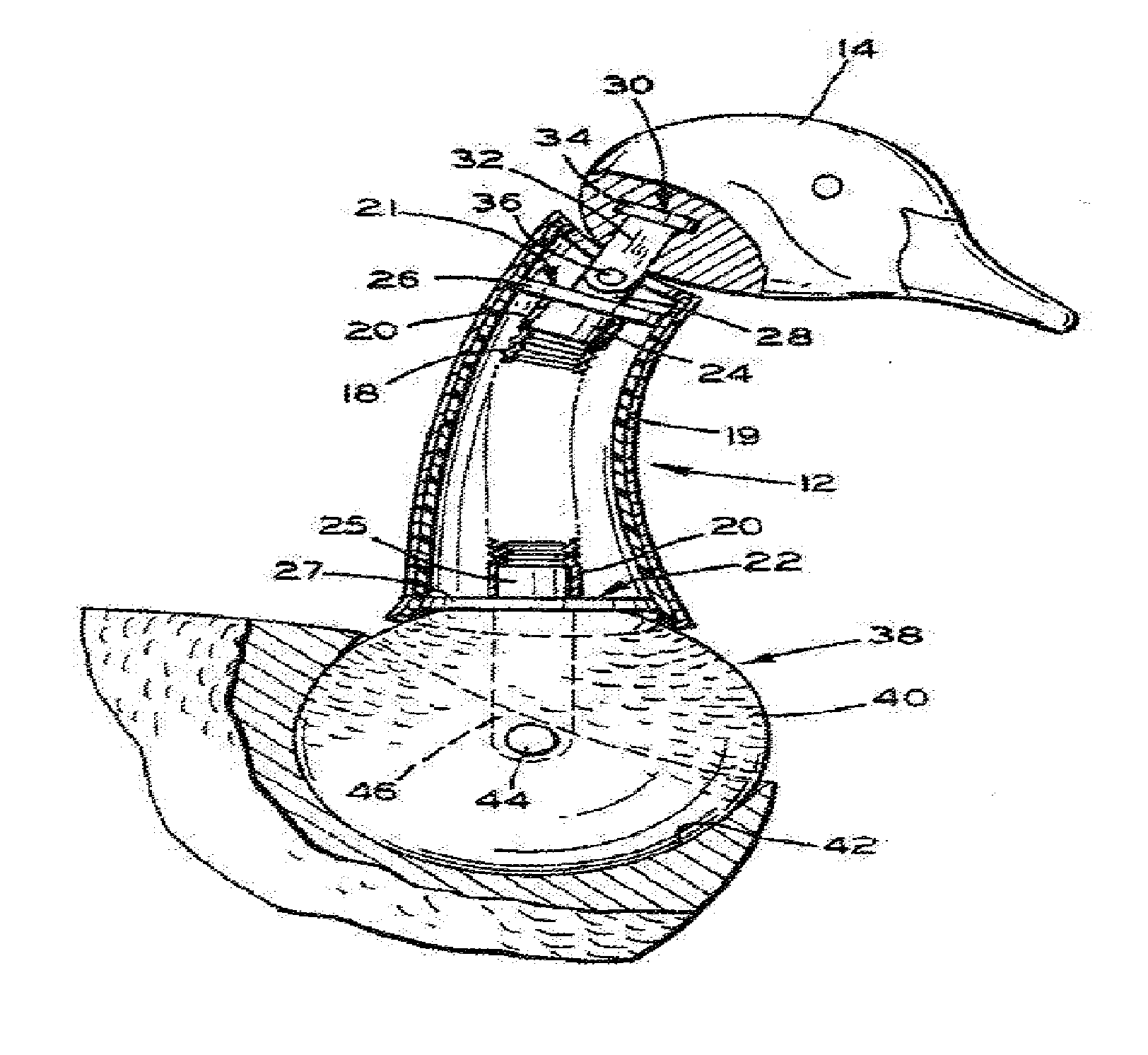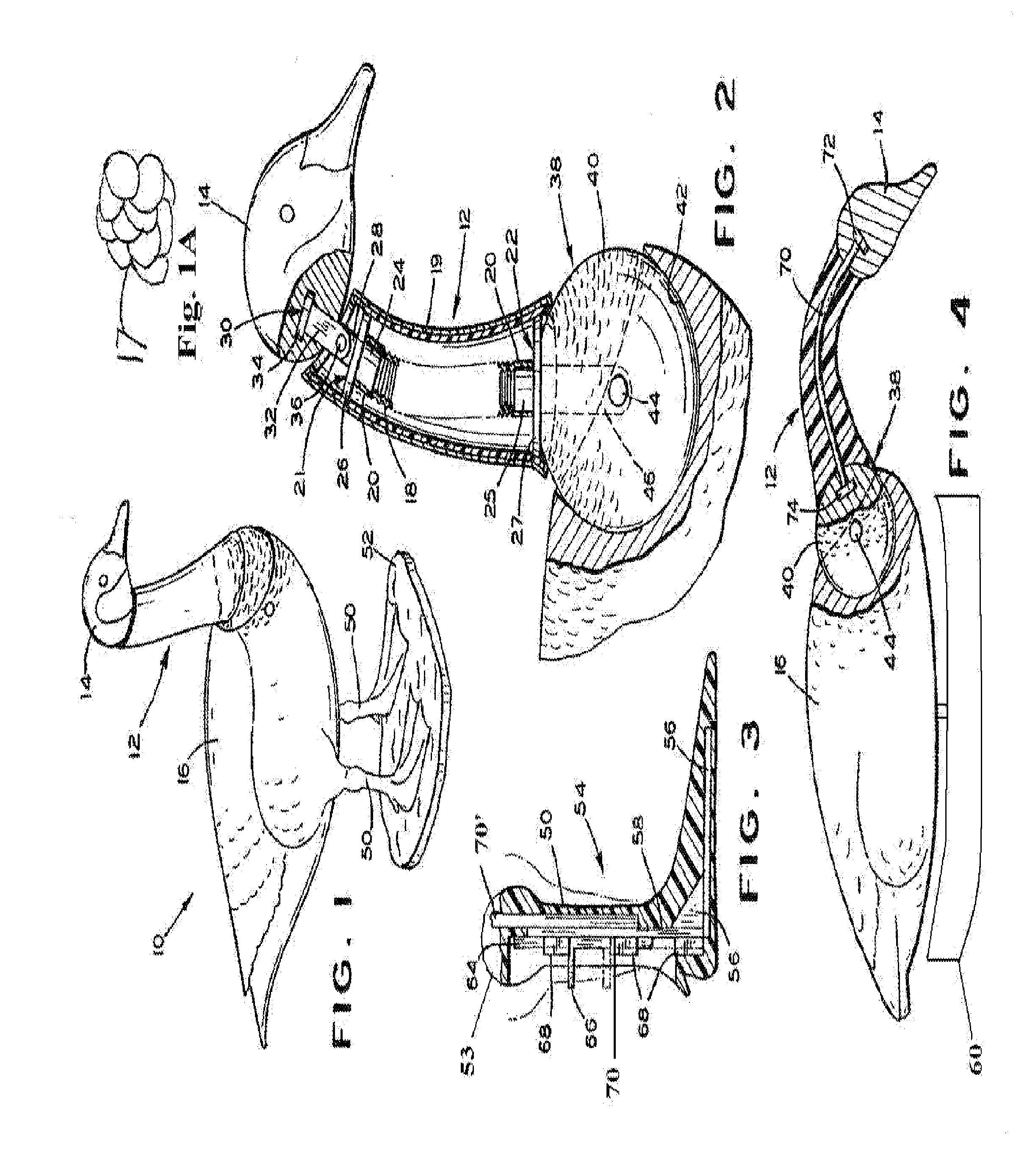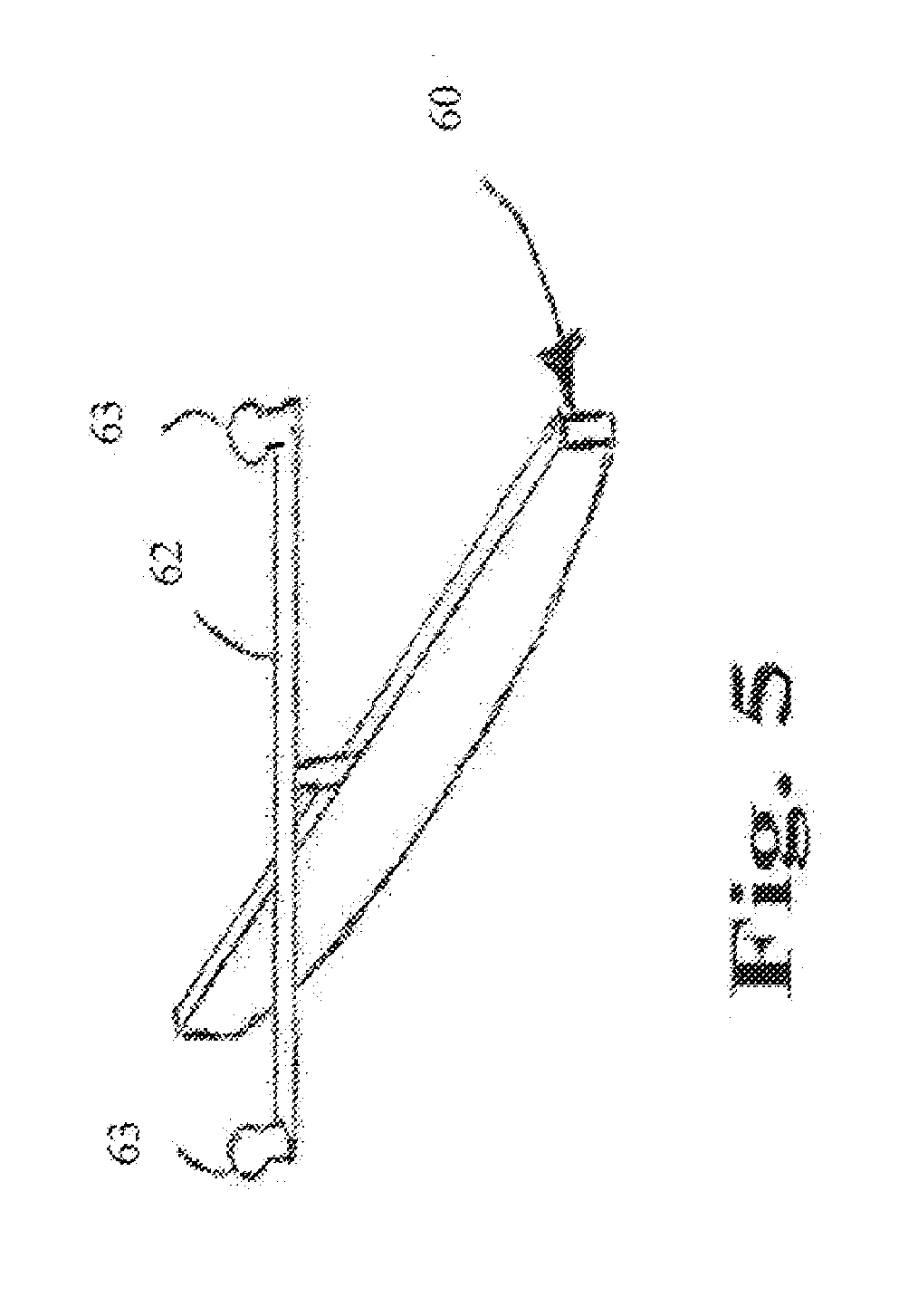Realistic Waterfowl Decoy Assembly
a real-life, waterfowl technology, applied in the field of real-life waterfowl decoys, can solve the problems of unnatural appearance of waterfowl and precise appearance of decoys, and achieve the effect of facilitating realistic head movement and enhancing the similarity of physical appearan
- Summary
- Abstract
- Description
- Claims
- Application Information
AI Technical Summary
Benefits of technology
Problems solved by technology
Method used
Image
Examples
Embodiment Construction
)
[0016]A first embodiment of the realistic decoy of the present invention is depicted in FIGS. 1 generally at 10. The decoy illustrated is a waterfowl, more particularly a goose decoy, including a neck assembly shown generally at 12, which interconnects a head 14 and a body 16. The head 14 and body 16 may be solid molded members, for example of a foamed plastic material. Another suitable form of body construction is shown and described in my earlier U.S. Pat. No. 4,890,408, the disclosure of which is incorporated herein by reference.
[0017]Faux feathers 17 of the type depicted in FIG. 1A, commonly used on hats and other items of apparel, can be used to adorn the exterior of at least a portion, and preferably all of the “above water” exterior of the decoy body 16. These fake feathers 17 can be attached using a water-proof adhesive. In addition, faux feathers 17 can be utilized, in smaller sized feathers, to cover portions or all of both neck 12 and head 14 to provide a more realistic ...
PUM
 Login to View More
Login to View More Abstract
Description
Claims
Application Information
 Login to View More
Login to View More - R&D
- Intellectual Property
- Life Sciences
- Materials
- Tech Scout
- Unparalleled Data Quality
- Higher Quality Content
- 60% Fewer Hallucinations
Browse by: Latest US Patents, China's latest patents, Technical Efficacy Thesaurus, Application Domain, Technology Topic, Popular Technical Reports.
© 2025 PatSnap. All rights reserved.Legal|Privacy policy|Modern Slavery Act Transparency Statement|Sitemap|About US| Contact US: help@patsnap.com



